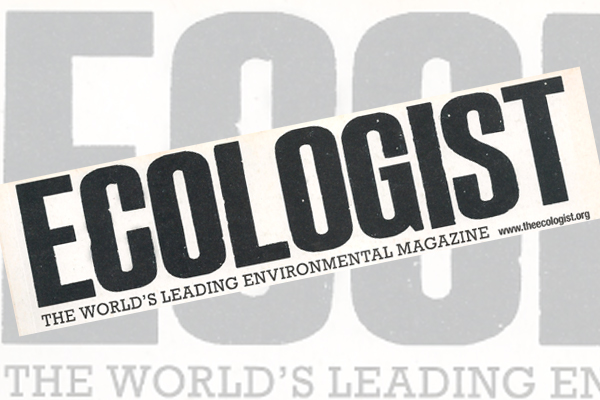Editorial: Here are Your Choices…

Doesn’t time fly? Almost exactly a year ago, the Stern Review into climate change studied three scenarios for a world being driven by climate change: business as usual, stabilising CO2 at 450ppm and stabilising it at 500-550ppm.
At 450ppm we had a 50-50 chance of avoiding the 2ºC temperature rise that would send the polar ice caps into terminal meltdown, dry up the rainforests and raise sea levels enough to drive two hundred million people from their homes. At 500-550ppm we might mitigate some of the worst effects of a changing climate, but not escape them completely. Business as usual, concluded the report, would lead to catastrophe – economic collapse akin (in today’s money) to the cost of fighting the two world wars and the 1930s stock market crash combined.
One year on and one of these scenarios – stabilising global CO2 at 450ppm – is no longer feasible. That’s how fast the science moves. As we go to press, internationally acclaimed climate scientist Professor Tim Flannery has pre-empted the release of the final instalment of the Intergovernmental Panel on Climate Change’s Fourth Report, with the view that the full report shows that the level of climate-changing gases in the atmosphere has already edged past that critical level. Other eminent scientists, including the IPCC’s chair, Dr Rajendra Pachauri, have chimed in in agreement.
These CO2 numbers have been quoted so often you could be forgiven for thinking they are just so much meaningless scientific number crunching. But these are the numbers that determine the future of every living thing on the planet. And once we cross over these numerical thresholds, we can’t cross back.
Such news should focus the agenda for the delegates at the annual UN climate convention and Kyoto Protocol meeting in Bali this December. As they convene yet another meeting and try to reach consensus on concerted global action beyond 2012, maybe the first question they should ask is: how do any of us act to prevent the situation becoming worse when it is already past a critical tipping point?
‘Decisively’ would be the only sane answer; yet decisiveness is continually sacrificed at the altars of economic expedience and consumer ‘choice’. Why is industry allowed to set targets to reduce emissions within a leisurely 5, 10, 15 years? Why are energy-inefficient goods and gas-guzzling cars allowed on sale in this or any other country? Why are the rises in air passenger duty so feeble?
Here’s the new bottom line. Having wasted years debating whether climate change was real, years tinkering with, but never committing to, renewable energy sources and a sustainable economy, and years redefining ourselves as ‘consumers’, we have built for ourselves a world where the Holy Grail of ‘choice’ has been smashed to the floor.
If we refuse to act immediately and without any further fannying about – politically, economically, individually – our only choices will be the kind of painful, terrifying ones about the future of the world’s people that none of us want to think about, let alone make.
There will be no more shades of grey, no room for the luxury of political correctness, no self-indulgent hours to spend debating whether children’s stories should only ever have happy endings. The stark choices we will face will be as black and white as: Who lives, who dies? Who will be allowed to be born, and who will not? Who eats, who starves? Who swims, who sinks? Who drinks, who is thirsty? Who sits in the shade, who burns in the sun? Who has heat in the winter, and who must we leave to freeze to death?
These are the heartbreaking dilemmas we will bequeath to our children and grandchildren unless we take positive, and effective, steps to turn things around.
- This editorial first appeared in the November 2007 edition of the Ecologist.












